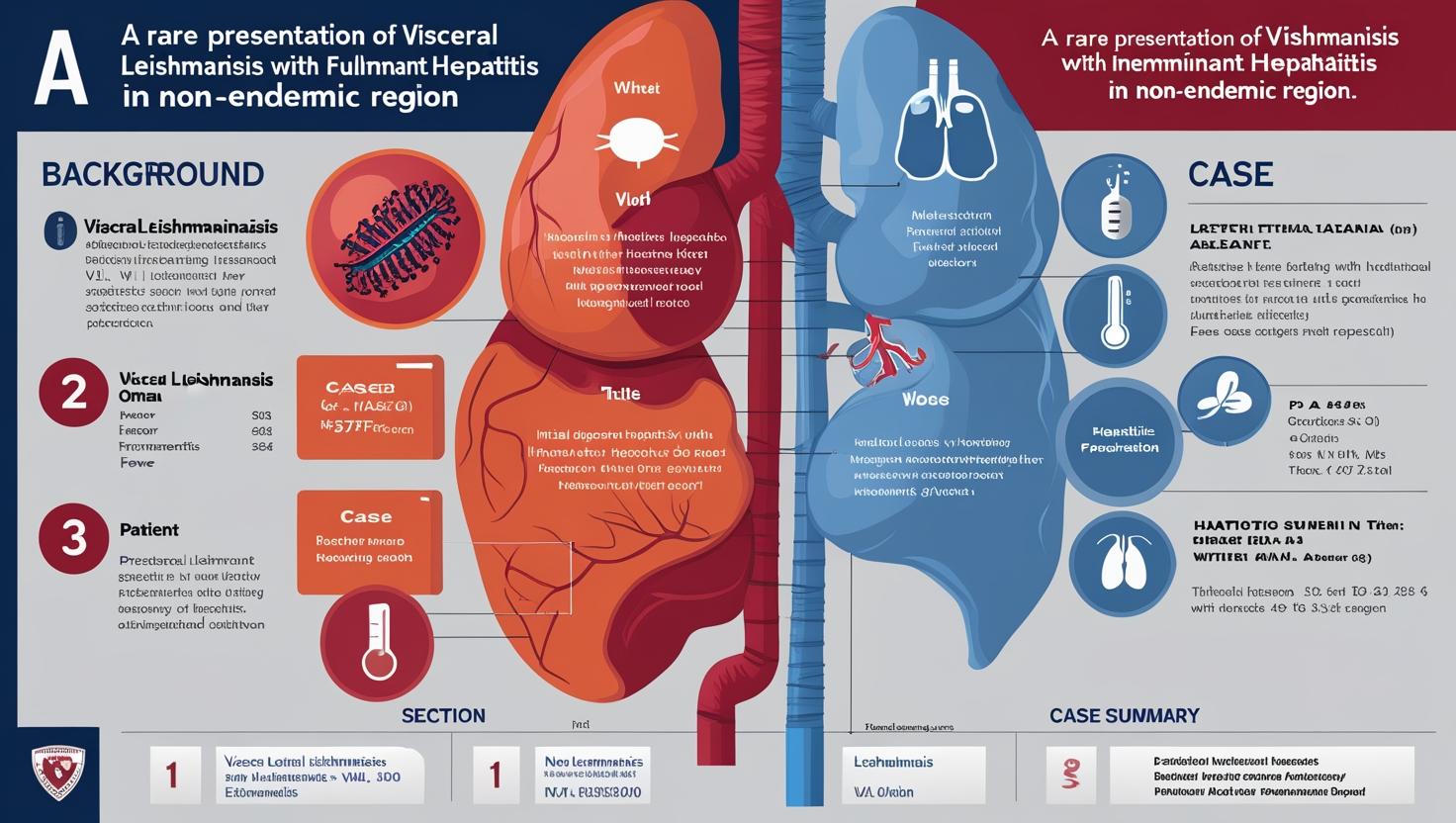Beyond Borders: A Rare Case of Visceral Leishmaniasis Presenting with Fulminant Hepatitis in a Non-Endemic Region
Hind Mohammed
Keywords:
Visceral leishmaniasis; kala-azar; fulminant hepatitis; Leishmania donovani; non-endemic regionsAbstract
DOI 10.5281/zenodo.17181622
Introduction:Visceral leishmaniasis (VL), also known
as kala-azar, is rare in Oman, a non-endemic country,
making diagnosis challenging due to low clinical suspi-
cion.
Case Presentation: We describe a 25-year-old
Ethiopian male who presented with a 4-day history
of nausea, vomiting, epigastric pain, fever, and epis-
taxis. Physical examination revealed jaundice and mas-
sive hepatosplenomegaly (liver palpable 16 cm below
the costal margin, spleen 18 cm). Initial laboratory
tests showed elevated C-reactive protein, mild hepatic
transaminase elevation, and pancytopenia. He was ini-
tially treated for malaria without improvement. Twenty
days later, persistent fever, fatigue, and recurrent epis-
taxis prompted reevaluation. Bone marrow aspiration
revealed Leishmania donovani amastigotes, and an
rK39 rapid test was positive. Shortly after admission,
the patient developed acute liver failure. Liver biopsy
demonstrated acute hepatitis with confluent necrosis
and numerous intracytoplasmic amastigotes; PCR con-
firmed L. donovani. He was treated with liposomal
amphotericin B (3 mg/kg daily for 5 days, with addi-
tional doses on days 14 and 21).
Outcome: The patient demonstrated gradual clinical
and biochemical improvement and achieved complete
recovery within one month.
Conclusion: This rare case of VL with fulminant hep-
atitis in a non-endemic setting highlights the impor-
tance of considering VL in patients with relevant travel
or migration history. Early diagnosis and timely therapy
are essential for favorable outcomes and emphasize the
need for heightened awareness and improved diagnostic
access in both endemic and non-endemic regions
Downloads





